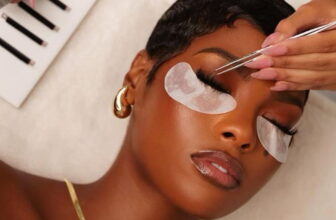When you have a persistent zit, patches on your face, or dark bags under your eyes, it is always an unpleasant feeling. Even though concealer is the ultimate go-to for hiding skin issues, there are times when it feels like no amount of concealer or foundation would cover them. And to make matters worse, adding extra products in an effort to cover them up simply seems to make matters worse.
That notwithstanding, to counteract the appearance of hyperpigmentation, which are dark spots caused by genetics, an excess of melanin, or the aftermath of acne breakouts on your face, you have to go the extra mile by employing products that are specifically formulated to neutralize dark or discolored areas of the skin. There are several methods to effectively color-correct dark spots on your face, including using a variety of vibrant colors, concealers, color-correcting primers, and foundations.
What Is Color Correcting?
Color correcting is a technique used to neutralize or reduce the appearance of hyperpigmentation, age spots, or dark circles on the skin. Professional MUAs have longed used this method by applying concealer or foundation that is a shade or two lighter than the natural skin tone to the affected area, and then blending it in with the surrounding skin.
Additionally, color correcting can also be done with color correctors which are specially formulated to neutralize specific color patches on the skin. For example, green color correctors are used to neutralizing redness caused by acne, while orange and yellow color correctors can be used to neutralize dark circles and dark spots. To brighten your face, you can use the lavender color corrector for extra radiance. All of the above should be used according to your skin tone. The color shades exist which range from fair to light to deep and medium to dark.
A step-by-step guide to color-correcting dark spots
Following the steps below, you should be able to apply your color corrector after understanding what each color does. It’s also important to note that color correctors should be applied before foundation or concealer. And then, you should use the foundation or concealer that matches your skin tone to blend everything together.
-
Apply your color corrector to bare skin
The first thing to do after completing your daily skincare routine is to apply the color corrector (color correcting primers) you need based on the issues with your skin. Apply it with a small concealer brush for the best coverage. Use your fingertips or a cosmetic sponge to blend in the color corrector for a more natural finish. Apply a thin coat at first, and then gradually add more until you get the required coverage.
-
Apply Foundation
You should use foundation to level out your skin tone after color correction. Always choose a foundation that matches your skin tone and apply it all over your face, making sure to blend well into the hairline and jawline.
-
Apply Concealer
Dab some concealer onto your skin to help brighten the appearance of your complexion or to further hide flaws. Apply a concealer that is one shade lighter than your skin tone directly on the dark spots. Blend well with a brush or your finger.
-
Set your makeup
After you have evened out your skin, you can now set your makeup using your preferred setting powder.
In addition to the above methods, you can also try using a Vitamin C serum to brighten skin and fade dark spots. Sunscreen also helps to protect your skin from further damage, which can cause new dark spots to form. It is also important to keep in mind that these methods will only help conceal the dark spots, but they will not necessarily treat them.
If you are looking to totally eliminate dark spots, consider consulting with a dermatologist. In the end, color correction is a game-changer for anyone looking to reduce redness, dullness, dark patches, or dark circles on the face.






